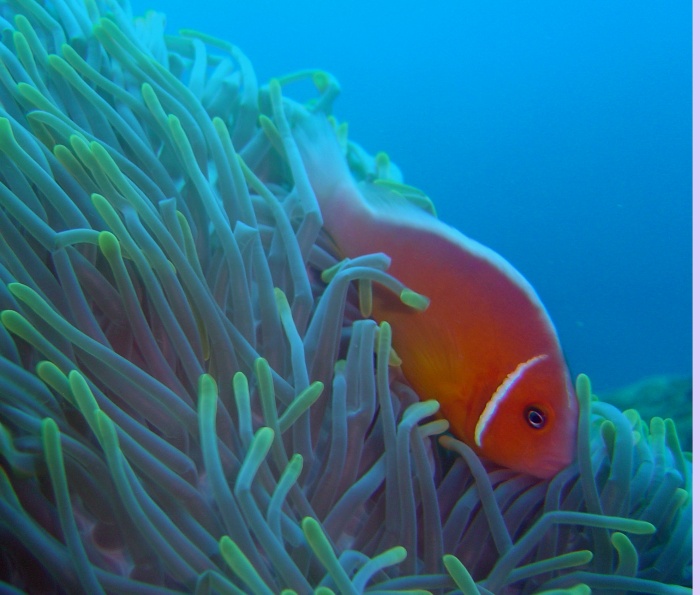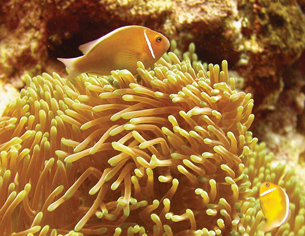Reproduction
Reproduction is key to any organism’s existence. Through
reproduction, the species DNA and genes are passed on. There are
several ways in which an animal
 can reproduce, as well as conditions
needed for the process to happen. Amphiprion perideraion have unique
aspects to their reproductive strategies. Being a marine organism,
they reproduce in the salt water. The waters they inhabit and the
areas they are specifically attracted to are around 25 degrees
Celsius (EOL, 2009). Having an increase of CO2 in the water where
the clownfish breed and lay eggs is believed to increase
reproduction activity (Miller et al., 2013).
can reproduce, as well as conditions
needed for the process to happen. Amphiprion perideraion have unique
aspects to their reproductive strategies. Being a marine organism,
they reproduce in the salt water. The waters they inhabit and the
areas they are specifically attracted to are around 25 degrees
Celsius (EOL, 2009). Having an increase of CO2 in the water where
the clownfish breed and lay eggs is believed to increase
reproduction activity (Miller et al., 2013).
Let us now take a look at these organisms, so we can spot them out
if we see them when we go scuba diving! The male pink skunk
clownfish have a faint orange band on their caudal fin, where the
females do not (Hattori, 2000). It is all about size with A.
perideraion. Only the larger of the species are breeders. If the
largest female dies, then the largest male actually switches sexual
 state (becomes female) and then the next largest male becomes the
main fertilizer for the new female (Hattori, 2000). Amphiprion
perideraion are monogamous, so this means that two individual fish
reproduce with each other other and not with multiple fish, even in
their school (Hattori, 2000).
state (becomes female) and then the next largest male becomes the
main fertilizer for the new female (Hattori, 2000). Amphiprion
perideraion are monogamous, so this means that two individual fish
reproduce with each other other and not with multiple fish, even in
their school (Hattori, 2000).
Spawning is when eggs are laid down by the female, and then
fertilized by the male. A. periderion spawn, and the females usually
lay their eggs in a rocky area or underside of the anemone, and
depending on conditions this happens between April and August
(Fautin et al., 2010). The pink skunk clownfish spawn more then once
during this period, and can produce around 3000 eggs during the
spawning times (Hattori, 2000). The eggs hatch in about a week,
after which there is a planktonic period lasting around ten days,
and then the juvenile fish begin their benthic life and become
symbiotic with the anemone (Murato et al., 1986).
After the pink skunk clownfish have matured, they remain in small
social groups consisting of the dominant male and female with other
non-reproductive males that will switch sexes if necessary, and
continue their interesting reproductive process (Fautin et al.,
2010).
Back to Home Continue to Interactions
